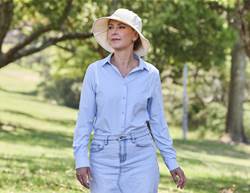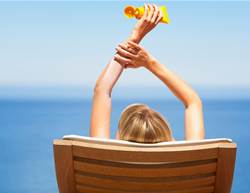As the summer sun intensifies and you slip, slop and slap, don’t forget to slide on some sunnies to protect your eyes from the sun’s harsh rays.
The eyes are more sensitive than our skin to UV rays and without protection they are at risk of photokeratitis, a painful eye condition that occurs when your eyes are exposed to too much ultraviolet (UV) radiation, said optometrist Luke Arundel.
“Photokeratitis can occur in one or both eyes simultaneously. Similar to sunburn like that which occurs on your skin, it is not usually noticed until well after the damage has occurred,” he said. “Symptoms include pain, redness, blurriness, tearing, swelling and sensitivity to light.”
Arundel also warned the risk to children’s eyes from sun exposure is significantly greater than for adults.
There are many conditions affecting the eyes that are related to UV exposure such as cataract, macular degeneration, pterygium (a fleshy growth over the front of the eye) and even eye cancers.
“Maximal ocular exposure happens when the sun is lower on the horizon, which is why it's still important to wear sunnies in winter, said Arundel. “And it is not only the direct sun on a fine, clear cloudless day that can cause damage. Up to 90% of ultraviolet rays can reach the eye through clouds and light reflected from the ground and off sand, snow or water is also a significant factor.”
Tips to try:
- Always check the tag as sunglasses sold in Australia must state the level of UV protection (Go for sunglasses marked category 2, 3 or 4).
- Novelty or toy sunglasses with coloured lenses in category 0 or 1 should be avoided.
- Polarised lenses are great for cutting reflected glare and are useful for water activities.
- Sunglasses are also available with prescription lenses and come in tinted, polarised or variable colour (photochromatic) options.
- Close-fitting, wraparound styles and sunglasses with thicker arms help block glare entering the eyes from the side of the head.
- Get children into the habit of wearing sunglasses while they’re young. Sunglasses with an elasticated band around the back can help to keep them in place.
- The next best thing to sunglasses is a broad brimmed – but note that hats stop only around 50 per cent of UV rays from entering the eyes.
- For young babies, cover their pram to protect their skin and eyes from the sun's rays.








